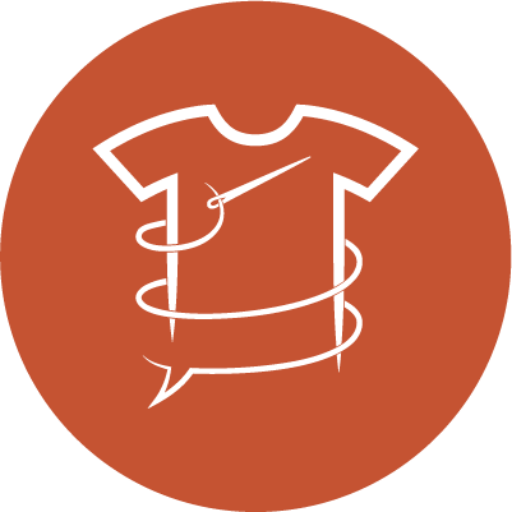Wearing

Wearing the T-shirt
The project T-shirt was distributed among those who had contributed to its creation, including the designers, farmers, ginners, and stitchers. First, the Costume Design and Fashion students at ECAS received the T-shirt. They were encouraged to smell the fabric, feel its texture, and make it their own.
Wearing a garment is a significant part of its story. Whether you wear it the way it is, or modify it to suit your style, the T-shirt becomes a part of your identity. The students in Erode and Rotterdam customized their T-shirts. Follow their journey below.

Costume, Design and Fashion professors and lecturers at ECAS. Photo: Mayke Groffen.
A visual introduction to the Erode College of Arts and Sciences programme Costume, Design and Fashion. Production: LGGB team.

The LGGB team interacting with students at ECAS. Photo: Erik de Maaker.
Handing out of the project T-shirts to the students at ECAS. Production: LGGB team.
Unpacking
The ECAS students received the project T-shirt. Several assignments were designed to capture their initial reactions, encouraging them to use all their senses to evaluate the garment. The students also shared their thoughts on the dilemmas involved in producing and wearing garments.
Identity and creativity
Students at Zadkine College creatively explored questions of identity and dress creatively, customizing their project T-shirts in unique ways.
At Zadkine College in Rotterdam, students are making the project T-shirt their own. Production: LGGB team.
ECAS students also explored questions of identity and dress. They then expressed these ideas by customizing the project T-shirts, making them uniquely their own.
ECAS students went all-out in customizing their project T-shirts. Production: LGGB team.

To make it her own, an ECAS student painted “Women need freedom like a bird” on her project T-shirt. Photo: Mayke Groffen.

Costume, Design and Fashion students wearing the project T-shirt. Photo: Ellen Haeser.
At ECAS the students concluded the workshop with a fashion show. Production: LGGB team.
Proudly customized
After customizing their project T-shirts, ECAS students presented and explained their designs in a concluding fashion show.
Toolbox Wearing
Just like the toolbox in Chapter 1, this one provides links to additional resources that can help you dive deeper into the themes discussed in this book. This toolbox includes links to videos, blogs, online publications, articles, and books. You can explore topics like “the real value of cotton,” “international trade in second-hand garments,” and “globalization,” with many of these themes further divided into subtopics. Enjoy watching and reading!
The value of cotton
What is the real value of cotton? Get to know more about the environmental impact of making and processing cotton from the perspective of the people who produce it.
Angel Chang
Fashion designer Angel Chang talks about the impact of producing cotton and the consequences of fast fashion.
- Chang, Angel. 2017. “The life cycle of a T-shirt.” TED Talk. Video, 6:03 minutes.
https://www.youtube.com/watch?v=BiSYoeqb_VY
Fashion revolution
Fashion Revolution is a project-based team, focusing on the history and consequences of fast fashion. In the lesson below, they dwell upon the consequences of fast fashion for cotton farmers in terms of forced labor. The lesson can be viewed as a flip book (Hermesmeyer) or a video (Slovakia Fashion Revolution).
- Hermesmeyer, Julia. 2023. “History: modern slavery – cotton production for fashion.” RecyCOOL Lessons, Fashion Revolution Germany.
https://lessons.recycool.academy/history/ - Slovakia Fashion Revolution. 2023. “Modern Slavery – Cotton Production For Fashion.” RecyCOOL Lessons. Video, 6:43 minutes.
Modern Slavery – Cotton Production For Fashion | History | RecyCOOL Lessons (youtube.com)
How it’s made
The science channel “How It’s Made” shows a video on the history of processing cotton since the 18th century.
- Science Channel. 2019. “How Cotton is Processed in Factories”. Video in the series “How It’s Made”, 5:11 minutes.
https://www.youtube.com/watch?v=QHgNoSYlhYs
Identity
- Crane, Diane. 2000. Fashion and its Social Agendas. Chicago: The University of Chicago Press. Book:
https://books.google.nl/books/about/Fashion_and_Its_Social_Agendas.html?id=vphcHONAXmwC&redir_esc=y - Davis, Fred. 1992. Fashion, Culture & Identity. Chicago: The University of Chicago Press. Book:
https://press.uchicago.edu/ucp/books/book/chicago/F/bo3684378.html
National identities
In 2018, the curatorial team at the European Fashion Heritage Association looked at how fashion plates in various European archives have created and imagined national identities.
- European Fashion Heritage Association. 2018. “Looking for Europe through fashion plates.” Blogpost on the Europeana website (on Europe’s digital cultural heritage).
https://www.europeana.eu/en/stories/looking-for-europe-through-fashion-plates
Globalization
Before T-shirts end up in stores, both the cotton they are made of and the final product have already traveled around the world. This is due to the globalized fashion value network. After being discarded by its first owner, a T-shirt travels further around the world if it becomes part of the international trade in secondhand clothing.
T-shirts travel around the world
- Thought Monkey. 2017. “Globalization: Why Everything is Made in China in 5 Minutes.” Video, 4:49 minutes.
https://www.youtube.com/watch?v=VlC11S5j88Q - Kleineidam, Christina, and Hans Peter Jost. 2009. Cotton Worldwide. Zürich: Lars Müller Publishers. Book:
https://www.lars-mueller-publishers.com/cotton-worldwide -
Rivoli, Pietra. 2014 (second edition). The Travels of a T-Shirt in the Global Economy: An Economist Examines the Markets, Power, and Politics of World Trade. Hoboken (New Jersey): John Wiley & Sons. First published 2005. Book:
L-G-0000573136-0002382647.pdf (e-bookshelf.de)
International trade in secondhand garments
You might assume that donating your old T-shirts and other old clothes at a collection point is an act of charity. However, the large quantities of secondhand clothing collected and imported into countries like those in Africa can actually pose a threat to local clothing industries.
- Kent, Sarah. 2024. “What Uganda’s war on second-hand clothes means for fashion.” CNN Edition, 23 September 2024. Article:
https://edition.cnn.com/style/ugandas-war-on-second-hand-clothes-bof/index.html
- Bloeman, Shantha. 2004. T-shirt travels. Documentary, 53:51 minutes.
https://www.pbs.org/independentlens/documentaries/tshirttravels/
Online version: https://www.youtube.com/watch?v=73XvxCy69gg - Brooks, Andrew. 2019. Clothing Poverty: The Hidden World of Fast Fashion and Second-Hand Clothes. Revised and expanded edition. First edition 2015. London: Bloomsbury Zed Books. Book:
https://www.bloomsbury.com/uk/clothing-poverty-9781786997371/
More inspiration
Need some more inspiration? Check out these examples from Museum Rotterdam’s collection:

